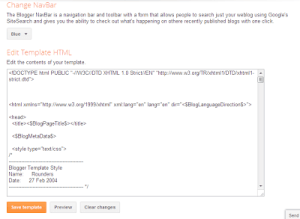
The importance of marketing has skyrocketed in the last two decades. In some ways, it has become a part of our culture. However, it has also become much more complex than before. With the advent of data-driven and targeted marketing, we’ve realized that you never have too much customer segmentation. Everyone is different. Thus a single marketing approach won’t work to bring in clients. That said, age is one of the countless factors marketers can use to divide their potential customers into subgroups for more effective marketing. There are generational differences in how people interpret and respond to information presented in messages, visuals, technologies, prices, and so on. For this reason, today, we will discuss how to adjust your marketing strategy for each generation.
Table of Contents
What Exactly Is A Marketing Strategy For Each Generation?
The phrase “generational marketing” describes dividing a market into subgroups based on the years its target consumers were born. This customer segmentation can benefit digital marketing because different generations have different perspectives and life experiences. While there are universal truths and values that all generations share, each has its own unique set of ideals and interests. Different generations share different experiences that shape their perspectives and behaviors. That is especially the case regarding purchasing habits or interacting with companies. Changes in technology, economic security, and access to education all impact how each generation interacts with one another.
Generational Differences:
When businesses notice that different generations react differently to various forms of advertising, they create a marketing strategy for each generation to address this discrepancy. Generational differences in social media usage and brand loyalty also exist. One of the pitfalls of marketing is trying to appeal to everyone at once, regardless of age. Companies that do this often find that their message doesn’t land because it’s too generalized to be relevant to any one individual. With that said, we will focus on the four generations that most companies target today.
Baby Boomers And Generation X:
Born between 1965-1984, the generation of people known as baby boomers saw sustained economic expansion after World War II. They are the most economically powerful demographic because of their age and length of working experience. Baby boomers have embraced contemporary technology despite spending much of their lives without it, particularly in social networking, mobile devices, and online shopping. Consumers like them are driven by price and are likely to be brand loyal. We’re also mentioning Generation X because both generations’ marketing strategies are similar. When the 1981 rescission struck, Generation Xers were just getting started in the workforce. That is why most are skeptical that they can count on Social Security in old age.
Despite a wealth difference, baby boomers and Gen x generations respond well to email marketing. Since members of these generations often check their inboxes for professional and personal news, it stands to reason that they would also like to receive promotional emails from businesses. Also, they check email on their desktop computers, tablets, smartphones, and phones.

Millennials:
Born between 1981-1996, Millenials, often referred to as “Generation Y,” are the first to have grown up with computers and other high-tech gadgets. As Millennials are the largest generation, businesses need to broaden their customer base by reaching out to as many people as possible. Millennials are more likely to purchase from a company if they believe the brand to be genuine. That typically means that they give a higher priority to businesses that are concerned about societal and environmental issues. This generation understands the importance of user-generated content and recommendations from friends and family. They prefer brands that already have lower prices rather than brands that offer discounts through sales.
Additionally, millennials are altering the commercial landscape by ignoring conventional advertising methods. For instance, they are the first generation to outright reject phone marketing. That is because they avoid phone calls. Therefore, companies need to try something else to make millennials their customers. For example, engaging them with social media and allowing them to interact with the company online is a good idea.
Generation Z:
Born between 1996 and the present day, generation Z is the most multicultural and technologically advanced. Even though many members of this generation are still very young, they wield substantial purchasing power. Due to the anxiety that comes with having a lot of debt, Generation Z members prioritize having a secure financial future. Social media users are more likely to buy from companies that use social marketing strategies because they trust the opinions of their peers. While Gen Z is searching for ways to save costs, they are less inclined to join loyalty programs. Furthermore, meaningful conversations are essential for today’s Generation Z. They’re not looking to be marketed to passively but rather to participate in and contribute to a community built around your content. Make material that teaches them something they can apply in the real world.
Additionally, you can use interactive content, such as polls and contests, to spark conversation and encourage participation. Find methods to include your audience and followers in the creation and promotion of your products. Ideas that inspire originality and participation have a better chance of resonating with the members of Generation Z. Furthermore. You can facilitate engagement by making your material accessible. Eliminate barriers to entry, place a premium on diversity, and fine-tune your online presence. That will ensure that you get gen Z customers.
Conclusion:
Hopefully, now you understand how to adjust your marketing strategy for each generation. In conclusion, then. It’s more effective to target specific age groups with a particular language than to try to please everyone with a blanket approach. More customers and more sales will come your way if you do this.

 About the Author:
About the Author:















Be the first to write a comment.